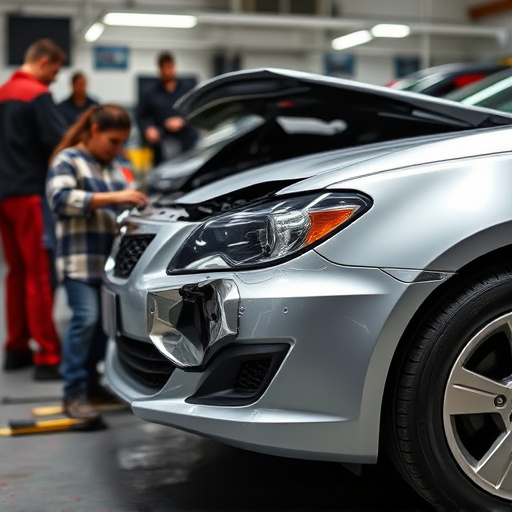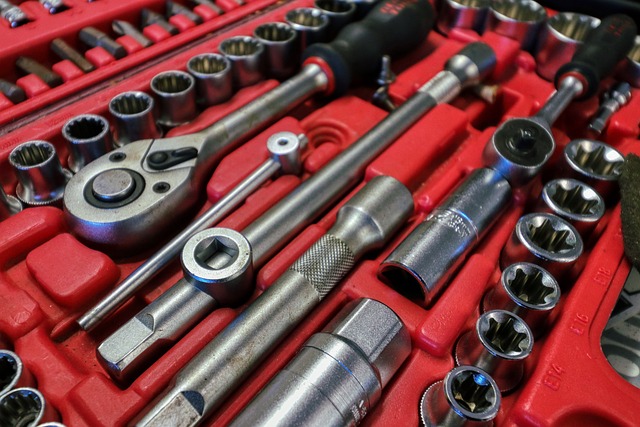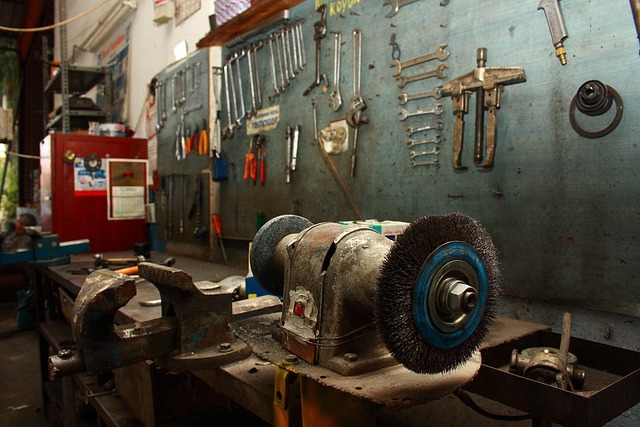Tesla's remote diagnostics after repairs revolutionize service management by providing real-time, accurate tracking of every service event, from oil changes to complex auto frame repairs, securely recorded and transmitted to internal systems. This digital approach contrasts with traditional physical logs, offering a holistic view of vehicle performance and history. Remote diagnostics ensure precise documentation of parts used and technicians involved, enhancing after-sales support and building customer trust through transparent access to service histories. Critical for maintaining vehicle efficiency, security, and longevity, these updates safeguard against fraudulent activities and are essential for Tesla owners to keep their vehicles running optimally over time.
Tesla’s remote diagnostics technology plays a pivotal role in modern vehicle servicing, especially post-repair. This innovative feature allows for the seamless updating of internal service records directly from the comfort of a technician’s workspace. By harnessing remote diagnostics after repairs, Tesla ensures efficient, secure, and up-to-date service management, enhancing customer satisfaction and streamlining garage operations.
In this article, we’ll explore these aspects in detail, providing insights into how Tesla’s remote diagnostics system works and its profound impact on post-repair service procedures.
- Understanding Tesla Remote Diagnostics: How It Works
- The Role of After-Repair Updates in Internal Service Records
- Ensuring Efficient and Secure Tesla Service with Remote Diagnostics
Understanding Tesla Remote Diagnostics: How It Works

Tesla remote diagnostics after repair play a pivotal role in maintaining and updating internal service records for Tesla vehicles. This cutting-edge technology allows for real-time monitoring and analysis of vehicle performance, enabling efficient troubleshooting and proactive maintenance. When a car undergoes a repair, whether it’s as simple as an oil change or a complex auto frame repair, the diagnostics system captures detailed data about the process.
Through this, Tesla can track every service event, ensuring accurate records that extend beyond typical auto repair shop interactions. The process involves advanced software that communicates with various components of the vehicle, gathering information on engine performance, battery health, and more. This data is then securely transmitted to Tesla’s internal systems, where it contributes to a comprehensive understanding of each car’s history—a stark contrast to traditional methods relying solely on physical service records or Mercedes Benz repair logs.
The Role of After-Repair Updates in Internal Service Records

After a vehicle undergoes repairs, especially complex or extensive ones, updating internal service records is paramount for several reasons. Tesla remote diagnostics after repair play a pivotal role in this process, ensuring that every service event is accurately documented and tracked. These updates serve as a dynamic narrative of the vehicle’s history, allowing Tesla to maintain meticulous records of all auto body services provided.
For instance, consider a scenario where a customer brings their car for a fender repair. Through remote diagnostics, Tesla can not only monitor the repair process but also update its internal system with detailed information about the incident, including dates, technicians involved, and parts utilized. This level of precision is invaluable, enabling Tesla to offer better after-sales support and fostering trust among its customers, who appreciate the transparency and accessibility of their vehicle’s service history.
Ensuring Efficient and Secure Tesla Service with Remote Diagnostics

Ensuring Efficient and Secure Tesla Service with Remote Diagnostics plays a pivotal role in maintaining the seamless operation and longevity of your Tesla vehicle. After a repair or service, remote diagnostics allow for real-time updates to internal service records. This means that every fix, from minor car paint repairs to extensive engine overhauls, is meticulously documented and tracked digitally. By leveraging this technology, Tesla service centers can offer more precise, faster, and secure auto maintenance, enhancing the overall customer experience.
Moreover, Tesla remote diagnostics after repair contribute significantly to vehicle security. Secure data transmission ensures that sensitive information remains protected. This not only safeguards your vehicle’s history but also discourages fraudulent activities. Just as a well-restored car requires regular upkeep to maintain its condition, keeping service records up-to-date is crucial for continuing the life of your Tesla, ensuring it remains in top shape through each service interaction and auto maintenance checkup.
Tesla’s remote diagnostics after repair updates play a pivotal role in maintaining accurate internal service records. By enabling efficient and secure access to vehicle data, this technology ensures that service teams have the most up-to-date information at their fingertips. This not only streamlines the repair process but also enhances customer satisfaction by minimizing downtime and errors. Incorporating Tesla remote diagnostics after repair is a game-changer for service providers, fostering a more seamless and effective ownership experience.














